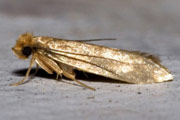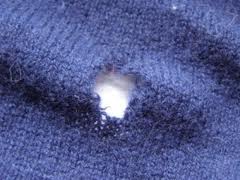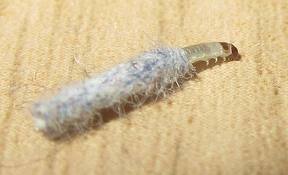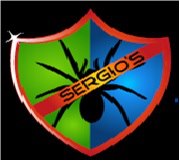
A female will lay several hundred during her lifetime; egg placement is carefully chosen in locations where they will have the best chance for survival. The eggs are attached with a glue-like substance and can be quite difficult to remove. After the egg hatches, the larva will immediately look for food. Larvae can obtain their required food in less than two months, but if conditions are not favorable they will feed on and off for a long time. Whether it takes two months or two years, each larva will eventually spin a cocoon in which it will pupate and change into an adult. Larvae stay in these cocoons for between one and two months and then emerge as adults ready to mate and to lay eggs.
The eggs hatch into larvae, which then begin to feed. Once they have finished larval development, they pupate and undergo metamorphosis to emerge as imagines (adult moths). Adults do not eat; males look for females and females look for places to lay eggs. Once their job is done, they die. Contrary to what most people believe, adult clothes moths do not eat or cause any damage to clothing or fabric. It is the larvae which are solely responsible for this, and which spend their entire time eating and foraging for food.
This species is notorious for feeding on clothing and natural fibers; they have the ability to turn keratin (a protein of which hair and wool mainly consist) into food. The moths prefer dirty fabric and are particularly attracted to carpeting and clothing that contains human sweat or other liquids which have been spilled onto them. They are attracted to these areas not for the food but for the moisture: the caterpillars do not drink water; consequently their food must contain moisture.
The range of recorded foodstuffs includes cotton, linen, silk and wool fabrics as well as furs; furthermore they have been found on shed feathers and hair, bran, semolina and flour (possibly preferring wheat flour), biscuits, casein, and insect specimens in museums.
Both adults and larvae prefer low light conditions. Whereas many other moths are drawn to light, 
Pest control
Control measures for clothes moths (and similar species) include the following:
Clothing Moth Traps – this step can help monitor the current infestation and prevent males from mating with females.
Cryofumigation – Fumigating an object with dry ice, that is enclosing it in a plastic bag for 3–5 days with dry ice so it is effectively bathed in a high concentration of carbon dioxide, denied oxygen, and thus it will kill all stages of clothing moths.
Dry cleaning – This step kills moths on existing clothing and helps remove moisture from clothes.
Freezing – Freezing the object for several days at temperatures below 32°F/0°C.
Heat (120°F/50°C for 30 minutes or more) – these conditions may possibly be achieved by placing infested materials in an attic in warm weather, or by washing clothes at or above this temperature.
Vacuuming – Since the moths like to hide in carpeting and baseboards, this is an important step towards full eradication.
Synthetic insecticides – typically aerosols works best here. Be sure to get proper coverage and don’t spread it too thinly. Treat once a month for the first three months and then once a quarter for the next year to ensure the infestation is under control.
Mothballs – there are two types of mothballs: older types are based on naphthalene, while more recent ones use paradichlorobenzene. Both decay into a gas, which is heavier than air and needs to reach a high concentration to be effective. Disadvantages: somewhat toxic and carcinogenic, mothballs should not be put where they can be eaten by children or pets. Naphthalene mothballs are also highly flammable.
Don’t let your favorite sweaters get holes in them. Give us a call today to set up an appointment. (248) 932-0018.



